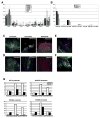Generation of induced pluripotent stem cells from human cord blood using OCT4 and SOX2
- PMID: 19796614
- PMCID: PMC2779776
- DOI: 10.1016/j.stem.2009.09.008
Generation of induced pluripotent stem cells from human cord blood using OCT4 and SOX2
Figures


References
-
- Aasen T, Raya A, Barrero MJ, Garreta E, Consiglio A, Gonzalez F, Vassena R, Bilic J, Pekarik V, Tiscornia G, et al. Nature biotechnology. 2008;26:1276–1284. - PubMed
-
- Conrad S, Renninger M, Hennenlotter J, Wiesner T, Just L, Bonin M, Aicher W, Buhring HJ, Mattheus U, Mack A, et al. Nature. 2008;456:344–349. - PubMed
-
- Eminli S, Utikal J, Arnold K, Jaenisch R, Hochedlinger K. Stem cells (Dayton, Ohio) 2008;26:2467–2474. - PubMed
Publication types
MeSH terms
Substances
Grants and funding
LinkOut - more resources
Full Text Sources
Other Literature Sources
Molecular Biology Databases
Research Materials

